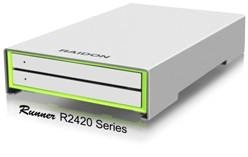According to a new research report by Berg Insight (www.berginsight.com), global sales of handsets featuring Near Field Communication (NFC) grew 300% in 2012 to reach 140 million units. Growing at a compound annual growth rate (CAGR) of 48.2%, annual shipments are forecasted to reach 1 billion units by 2017.
Wider adoption of NFC in mobile phones began in 2011 and accelerated in 2012 when the top 10 handset vendors released nearly 100 NFC-enabled models. NFC technology enables numerous applications such as information exchange, device pairing for establishing Bluetooth or WLAN connections, access control, electronic ticketing and secure contactless payments.
However, Berg Insight anticipates that it will take some time before the stakeholders agree on business models for payment networks and access to secure elements that store the sensitive user information in NFC-enabled handsets. Once developers gain experience with NFC and get access to a larger installed base of compatible handsets, we can also expect to see entirely new use cases not yet imagined, according to the research group.
Connectivity technologies such as Bluetooth, WLAN and GPS are already standard features in most smartphones. Shipments of WLAN-enabled handsets increased to 700 million units in 2012 and the attach rate reached 44%t. Several new WLAN standards and certification programs are now being adopted to enable new use cases and improve the user experience when using WLAN in handsets.
Wi-Fi Direct facilitates making device-to-device connections to enable content sharing and wireless connection to peripherals. Wi-Fi Miracast enables peer-to-peer HD video and audio streaming without cables, for instance between a smartphone and a TV. Wi-Fi Passpoint enables mobile devices to discover and connect to WLAN networks automatically without user intervention.



